Open Journal of Analytical and Bioanalytical Chemistry
Regulation of enzymes with identical subunits on the example of Transketolase
Olga N Solovjeva*
Cite this as
Solovjeva ON (2022) Regulation of enzymes with identical subunits on the example of Transketolase. Open J Anal Bioanal Chem 6(1): 004-012. DOI: 10.17352/ojabc.000024Copyright License
© 2022 Solovjeva ON. This is an open-access article distributed under the terms of the Creative Commons Attribution License, which permits unrestricted use, distribution, and reproduction in any medium, provided the original author and source are credited.The molecule of transketolase is a dimer with structurally and functionally identical subunits. Its active sites are located in the region of intersubunit contact, which has been shown also for other thiamine enzymes. This leads to the reciprocal influence of active sites in the binding of cofactors and during catalysis. In this review, it is shown that the functional non-equivalence of the active sites of transketolase from Saccharomyces cerevisiae is initially formed upon the binding of the first cofactor, a divalent cation, not thiamine diphosphate, as previously thought. An attempt was made to find the reason for the differences between catalytic measurements and crystallographic data on the possible part-of-the-sites reactivity of the functioning of transketolase. At the same time, the difference in the amplitudes of dichroic absorption during the binding of reversibly and irreversibly splitting substrates has nothing to do with the flip-flop mechanism. It was also shown that with an increase in the concentration of substrates, a sharp decrease in activity occurs, which is explained by a switch from the alternate binding of the substrate in two active sites to its simultaneous binding both in one-substrate and two-substrate reactions. This fact could also be the reason for the rejection of the flip-flop mechanism of catalysis by transketolase. The mechanism may be similar to human transketolase, which may have clinical application.
Abbreviations
TK: Transketolase; ScTK: Transketolase from the yeast Saccharomyces cerevisiae; ThDP: Thiamine Diphosphate; DHEThDP: 2-(α,β-dihydroxy ethyl)-thiamine diphosphate; HPA: β-hydroxypyruvate; X5P: Xylulose 5-Phosphate; F6P: Fructose 6-Phosphate; GlyA: Glycolaldehyde; G3P: Glyceraldehyde 3-Phosphate; GAPDH: Glyceraldehyde 3-Phosphate Dehydrogenase; CD: Circular Dichroism
Transketolase (TK, EC 2.2.1.1) is a key enzyme of the pentose phosphate pathway. TK catalyzes the interconversion of keto sugars and also sugars [1]. It can also more slowly catalyze the one-substrate reaction with only keto sugars [2,3]. TK is a dimeric enzyme and has two structurally and functionally identical active sites [4] each of which is located in the interface of identical subunits. The coenzyme thiamine diphosphate (ThDP) is associated with TK both directly and through a cation - calcium or magnesium [5,6]. ThDP interacts with the Pyr domain of the one subunit and the PP domain of the other, the latter through a divalent cation (Figure 1) [6]. So, each active site is formed by amino acids of both subunits, and catalysis proceeds in the area of intersubunit contact. In the absence of a cation in the active site, ThDP binding does not occur. The native enzyme isolated from the baker’s yeast Saccharomyces cerevisiae (ScTK) contains Ca2+ [7].
ScTK was discovered in 1953 independently by Horecker and Racker [8,9]. It is the first ThDP-dependent enzyme whose crystal structure has been resolved [5,10]. It was shown that the ScTK subunits are identical both in amino acid sequence and tertiary structure. TK is the simplest representative of ThDP-dependent enzymes and can serve as a good model for studying their function. TK plays an important role in the life-supporting activity of cells.
The study of TK is of great practical importance. TK is widely used in organic synthesis [11]. The synthetic use of TK with hydroxypyruvate (HPA) as a donor substrate and with a number of different aldehydes has been well studied. Some researchers use immobilized TK for synthesis [12,13] or microfluidic reactors [14,15]. To reduce the cost of synthesis, a cascade of TK and transaminase was used, the latter synthesizes HPA from serine [16-18]. To use substrates that do not catalyze by TK, mutants were obtained that catalyze non-a-hydroxylated aldehydes – propanal (propionaldehyde) [19,20], benzaldehyde [21], L-arabinose [22], polar aromatic aldehydes [23,24], and others.
The study of the properties of TK is important because it is known that a number of diseases are associated with changes in the activity of TK. These are cancer [25-32], Alzheimer’s disease [33,34], diabetes, alcoholism [35-38] etc.
The effect of TK on the suppression of the growth of cancer cells is that with a decrease in its activity, the level of ribose 5-phosphate decreases, which inhibits the proliferation of cancer cells during antitumor treatment [39,40]. In addition, GlyA, a substrate of TK, is a highly reactive Maillard agent leading to the formation of protein modifications. Many diseases, such as diabetes, uremia, atherosclerosis, cataractogenesis, and Alzheimer’s disease, are associated with Maillard-derived glycation end products [41,42]. By reducing the concentration of GlyA in the reaction with TK, the formation of glycation end products can be suppressed [42]. TK is used for the biosynthesis of substrates. The enzyme produced by mutagenesis is widely used for the biosynthesis of substrates not catalyzed by native TK [43-46] and to increase enzyme thermostability [20,47].
The interaction of the active sites of TK, like other thiamine enzymes, is due to their close location in the area of intersubunit contact. This determines the reciprocal influence of active sites on each other – the binding of ThDP or substrate in one active site changes the characteristics of their binding in the second one. In this review, we show that the formation of nonequivalence of active sites begins with the binding of a cation, not ThDP, as previously thought. This review discusses the mechanism of mutual influence of active sites of transketolase, an enzyme whose molecule consists of two identical subunits. The conditions for switching the alternate operation of the TK active sites (the flip-flop mechanism) to their simultaneous functioning are also discussed.
Nonequivalence of active sites of transketolase begins with calcium-binding
The binding of ThDP to apoTK is possible only if a cation is present in the active site. In native ScTK, ThDP is bound to the enzyme via Ca2+ [7]. In apoTK, one of the two calcium ions is strongly bound [48]. It can be removed only by keeping the enzyme with EGTA followed by dialysis in EDTA [49]. The technique is described in detail in the paper [50]. Removal of Ca2+ made it possible to determine the Kd for the binding of Ca2+ and Mg2+ [50]. Negative cooperativity with respect to the binding of both Ca2+ and Mg2+ was observed (Table 1, N 1,2). Negative cooperativity was also observed with the binding of ThDP in the presence of Ca2+ or Mg2+ (Table 1, N3.4) [50-52]. Previously obtained data on the positive cooperativity upon ThDP binding in the presence of Mg2+ were incorrect and were due to the fact that Ca2+ was not removed from one active site and, accordingly, the enzyme contained Ca2+ in one active site and Mg2+ in the second one [53]. The fact that Ca2+ remains bound in the first active site upon the addition of an excess Mg2+ were shown later [50].
If Ca2+ was not added and was contained in only one active site, the affinity of this active site for ThDP was reduced by two orders of magnitude (Table 1, N5). In this case, ThDP is bound by the pyrophosphate tail with Ca2+ located in one subunit, and by the aminopyrimidine ring with the second cation-free subunit. Thus, we can conclude that Ca2+ not only performs the function of direct binding to one ThDP molecule (first cation), but also changes the structure of the active site in the region of ThDP binding by its aminopyrimidine ring (second cation), and vice versa, for the second active site. An interesting fact is that the binding of Ca2+ in the active site of each subunit also changes the tertiary structure of this subunit, independently of the other, which was shown by the method of differential scanning calorimetry [50].
Similar results on the effect of the cation on the affinity of ThDP for TK were obtained for TK from E. coli. In the absence of externally added Mg2+, Kd for ThDP binding was 113 or 206 mkM, while with the addition of Mg2+ it decreased to 1.3 mkM, that is, also by two orders of magnitude [54,55].
So, active sites of TK are initially equivalent. Their close arrangement leads to the fact that already upon binding of the first cofactor – calcium or magnesium ion, the affinity for the cation in the second active site changes [50]. After the cations bind to both active sites, they again become functionally equivalent. Similarly, the binding of ThDP at the first active site decreases the affinity of ThDP for the second active site. After binding of ThDP at both active sites, they become functionally equivalent.
About flip-flop mechanism of transketolase reaction
Two-substrate (transferase) TK reaction proceeds in two stages (Figure 2). The first stage of catalysis is the binding (Compounds IV, V) and cleavage (Compounds VI, VII) of the first substrate – keto sugar. In this case, DHEThDP is formed, and the first reaction product is released into the medium. The second stage of catalysis is the binding of the second substrate – aldo sugar (Compound IX), to DHEThDP, followed by the release of the second reaction product (Compound X) into the medium. Flip-flop in this case means the alternating work of the active sites. When the first stage of catalysis occurs in the first active site, the second stage occurs in the second active site, and vice versa.
For the one-substrate TK reaction, the second substrate is also a keto substrate. Therefore, the flip-flop mechanism of the one-substrate reaction will mean the alternating binding of the first keto substrate molecule to the thiazole ring of ThDP (Figure 3, compound II) and the second keto substrate molecule (Figure 3, compounds V-VII), while the first formed GlyA molecule was transferred on the aminopyrimidine ring of ThDP (Figure 3, compound IV) [56].
The first evidence of the flip-flop mechanism was provided by Racker [57]. He showed that during the incubation of holoTK with radioactive ketose ([14C] F6P), one-half of the associated radioactivity was in DHEThDP, and the other mainly belonged to ketose. The issue of the existence of a flip-flop mechanism for TK remained controversial. This was discussed both in experiments under equilibrium conditions – on the circular dichroism (CD) spectra and in crystals of holoTK with substrates, and in kinetic studies.
Dichroic absorption spectra of hydroxypyruvate and reversibly cleaved substrates
The binding of ThDP to apoTK leads to the formation of a negative dichroic absorption band with a maximum of 320 nm [58]. When irreversibly cleaved HPA is added to holoTK, inversion of the negative band is observed. When reversible cleaved substrates are added, the negative absorption band disappears only (Figure 4A) [59]. Accordingly, the amplitude of the change in dichroic absorption for HPA is 2 times higher than for other keto substrates. To understand the reason for this, the measurement of CD spectra was carried out upon binding of xylulose 5-phosphate (X5P) in the presence of triosephosphate isomerase, glycerophosphate dehydrogenase, and NADH, i.e. when the reaction becomes irreversible. Under these conditions, the same inversion of the dichroic absorption band for X5P binding was observed as for the irreversibly cleaved HPA, and with the same amplitude (Figure 3B). This fact shows that the reason for the difference in amplitudes upon binding of X5P or HPA is the presence or absence of reversibility of the reaction and not flip-flop.
CD spectra: A – CD spectra of TK: (1) apoTK; (2) holoTK; (3) holoTK + F6P; (4) holoTK + HPA [61]; B – Near ultraviolet differential CD spectra of TK: (1) (holoTK + HPA) – holoTK; (2) (holoTK + X5P) – holoTK; (3) the same as (2) but in the presence of triosephosphate isomerase, a-glycerophosphate dehydrogenase and NADH [60].
Kinetics of G3P accumulation during the one-substrate TK reaction determined by the change in optical density overtime at 340 nm. The sample contained 5 mkg/ml TK and 70 mkM X5P: C – (1) GAPDH was added into the sample before starting the reaction; (2-6) GAPDH was added 0.5, 1.5, 2, 4, and 7 min after the beginning of the reaction, respectively (shown by arrows) [60]; D – (1) in the presence of GAPDH (a continuous record was made); (2) in the absence of GAPDH (after different time intervals, the amount of G3P accumulated in the reaction mixture was determined) [59].
To prove the reversibility of the reaction with X5P, the one-substrate reaction was carried out with the addition of NAD+ and glyceraldehyde 3-phosphate dehydrogenase (GAPDH) (i) at the beginning of the reaction, (ii) at various intervals after the start of the reaction, and (iii) was not added at all. If the reaction was carried out with the addition of NAD+ and GAPDH immediately, a constant reaction velocity was observed (Figure 4C, 4D, curves 1). If NAD+ and GAPDH were added not immediately, but sometime after the start of the reaction, then in their absence a certain amount of X5P was formed. After the addition of NAD+ and GAPDH, the X5P formed was rapidly converted and then the reaction proceeded at a constant rate equal to that in curve 1 (Figure 4C, curves 2-6). The magnitude of the burst (due to the formation of X5P in the absence of NAD+ and GAPDH) shows that after 2 min the formation of X5P in their absence stops. In another set of experiments, the reaction was carried out in the absence of NAD+ and GAPDH, and the amount of glyceraldehyde 3-phosphate (G3P) formed was measured after stopping the reaction by denaturing TK. In this case, in the absence of NAD+ and GAPDH, the reaction also stops after 2 min (Figure 4D, curve 2), while in their presence the reaction rate remains constant for a long time (Figure 4D, curve 1).
Thus, the reason for the slowing down and subsequent termination of the reaction of holoTK with X5P in the absence of auxiliary enzymes is true that it is reversible and continues until an equilibrium is reached between the initial substrate (X5P) and the reaction products (G3P and erythrulose) and therefore these results are not relevant to the flip-flop mechanism.
Binding of substrates with transketolase in crystals
The crystals of holoScTK [62,63] and holoTK from E.coli [64] were obtained with various substrates – HPA [63,64], X5P [64], fructose 6-phosphate (F6P) [62,64]. In crystals with HPA, dihydroxy ethyl thiamine diphosphate (DHEThDP), the product of the first half-reaction, was detected in both active sites, which excluded the flip-flop mechanism [63-65]. In holoScTK, upon preparation of crystals with F6P, the first product of the one-substrate reaction erythrose 4-phosphate, was determined [62]. In this case, it can be concluded that the splitting of F6P occurred in both active sites. In crystals of holoTK from E.coli with X5P and F6P, only molecules of the initial substrates were determined in the region of the active site [64], by 90% for X5P and 75% for F6P. DHEThDP can be less than 5% [64]. That is, in crystals with these substrates, the one-substrate reaction practically does not occur. The same authors showed that upon the preparation of crystals with X5P and F6P in the presence of auxiliary enzymes, DHEThDP is formed, and during kinetic measurements in solution, the flip-flop mechanism is observed [64]. These data confirm the previously obtained results by measuring the amount of the reaction product in the absence and in the presence of auxiliary enzymes (Figure 4).
For human TK using 1H NMR, it was shown that DHEThDP is not formed in holoTK crystals with X5P; crystals with F6P contain 12% DHEThDP and crystals with sedoheptulose 7-phosphate form almost the same amount of DHEThDP and donor-ThDP adduct [66]. Thus, at least for sedoheptulose 7-phosphate, a flip-flop mechanism may be possible.
Thus, on the basis of crystallographic data, conclusions were drawn both for and against the flip-flop mechanism of the TK reaction.
Activity measurements data
Most activity measurements show the presence of a flip-flop mechanism. Evidence for nonequivalence of the two active sites in TK was given in the review [61]. This is the biphasic nature of TK inactivation or, as when using tetranitromethane, stopping inactivation in the presence of a donor substrate with residual activity of 50%. The difference in dichroic absorption of HPA and X5P in review [61] is explained by the flip-flop mechanism in error, which is proved by the data in Figure 4. The use of stopped-flow activity measurements showed later that in the pre-stationary phase of the one-substrate TK reaction, one mole of X5P is cleaved and one mole of the reaction product (G3P) is formed per mole of the enzyme, equally in holoTK and in semiholoTK. The conclusion was made that only one of the two active sites functions at a time [67]. However, this conclusion was incorrect, since did not exclude a flip-flop mechanism, in which different stages of catalysis occur simultaneously in two active sites - while in one active site of TK a release of the reaction product formed in the second stage occurs, in the second active site at this moment the substrate is bound.
In article [50] it was shown that in the one-substrate reaction when measuring the activity of holoTK with varying concentrations of HPA or X5P, with an increase in the substrate concentration, the activity first increases, and then abrupt decrease in activity occurs, after which the activity begins to increase again, starting with a new, more low level (curves 1,2 in Figure 5). It was possible to calculate the Km values for both parts of the curves only if the independence of the first and second parts of the saturation curves was allowed. At the same time, the activity of both semiholo TKs (in the first and the second active sites) was the same, which indicates the initial identity of the active sites [50]. The only explanation for this abrupt decrease in activity is that up to a certain concentration of substrates (up to 2.5 mkM for X5P and up to 100 mkM for HPA), active sites work alternately (flip-flop), and then they begin to work simultaneously, as a result of which the activity of each active site decreases. So, the inclusion of the flip-flop mechanism depends on the concentration of the substrate. Similar results were obtained for F6P and GlyA [56] (curves 3-6 in Figure 4).
An abrupt decrease in activity has also been shown in 1990 for a-ketoglutarate dehydrogenase after reducing its sulphydryl groups [68] (Figure 5). It is likely that the reason for this is the same as for TK.
The reaction mixture contained 50mM glycylglycine (only in (2) – 10mM), pH 7.6, 0.1 mM Ca2+, 0.1mM ThDP and (1) –7mM sodium arsenate, 0.37mM NAD+, 3U/ml GAPDH, 3.2mM dithiothreitol, 5mkg/ml TK, 0.003-0.62mM X5P; (2) –50mkg /ml TK, 0.03-0.6mM HPA; (3) – 7mM sodium arsenate, 0.3mM NAD+, 10U/ml GAPDH, 3.2 mM dithiothreitol, 250mkg/ml TK, 0.15-10mkM F6P; (4) – measurement with 1mM K3Fe(CN)6 after 2h of incubation of 0.2 mg/ml TK with 0.1-5.4 mM GlyA; the same ingredients were added to the reference cuvette, but without preincubation; (5) –7 mM sodium arsenate, 0.3 mM NAD+, 10 U/ml GAPDH, 3.2mM dithiothreitol, 40mkg/ml holoTK, 1-170mkM F6P, 1.5mM ribose 5-phosphate; (6) – as (4) with addition of 1.5mM ribose 5-phosphate.
Flip-flop mechanism in transketolase reaction
The article of Wielgus-Kutrowska, Grycuk, Bzowska [69] considered three possible variants of part-of-the-sites binding and reactivity of active sites of dimeric enzymes (Figure 6). (A) - after binding the substrate in one of two active sites of initially different (1) or initially identical (2) subunits, the second active site is unable to bind the substrate, for example, due to steric hindrances, and catalysis occurs in only one active site. (B) - both active sites can bind the substrate, but catalysis occurs only in one of them. In (B-2), the ligand binds randomly to one active site, and this determines the function of each active site during one catalytic cycle. (C) - flip-flop, alternating substrate binding, and catalysis in both active sites. It can only operate when asymmetry is induced by ligand binding. In this case, active sites occupy the same states, but one after the other, and not simultaneously.
Under equilibrium conditions, substrate HPA binding occurs in TK simultaneously in both active sites, as shown by CD as well as in crystals with HPA (DHEThDP was located in both active sites) [63-65]. With phosphorylated substrates in most active sites was the initial substrate [64,66]. Catalysis is also carried out by both active sites. This is obvious because the activity of holoTK is twice as high as that of semiholoTK. Therefore, variants A and B showed in Figure 7 can be excluded. Accordingly, only variant C is possible for TK. During TK catalysis, the strong binding of substrate to one subunit of the dimer decreases its binding affinity in the other subunit. Under equilibrium conditions, the active site with a lower affinity for the substrate can also bind the substrate slowly and weakly. Therefore, the possibility of a flip-flop mechanism, in our opinion, can be considered only under dynamic conditions, i.e. in catalysis.
Therefore, alternative functioning of active sites is possible due to their resulting difference in the affinity for binding of substrates. The binding of one substrate molecule at the first active site sharply decreases the affinity of the second substrate molecule for the second active site and vice versa.
In our articles [50,56] we showed that the flip-flop mechanism for ScTK is associated with the presence of two Km for donor substrates. In the first region of the curve (Km1), the active sites work alternately (while binding and cleavage of the donor substrate occurs in the first active site, binding of the acceptor substrate with DHEThDP occurs in the second one). With the increase in the substrate concentration (Km2 region), a sharp decrease in the activity of both active sites occurs, which can be explained only by their simultaneously work.
Two values of Km upon binding of the donor substrate are observed only in the presence of excess Ca2+ in the medium. The enzyme with Ca2+ in the active sites only and the enzyme with Mg2+ in the active sites and in the medium have one Km equal to the second Km with a lower affinity for the enzyme in the presence of excess Ca2+ (Table 2) [50]. These data are consistent with the calorimeter data that the presence of excess Ca2+, not Mg2+ in the medium increases the thermal stability of holoTK [50], i.e. somehow changes the structure of the whole molecule and, in all likelihood, the structure of active sites. This issue requires further study. We cannot say yet that the flip-flop mechanism occurs when one Km is determined, that is, in the absence of Ca2+ in the medium or in the presence of Mg2+ in the active sites and in the medium. It is likely that the decrease in affinity for substrates under these conditions as compared to the Km1 in the presence of Ca2+ in the medium, is due to another reason.
Two semiholo TKs (semiholoTK 1 is the enzyme in which ThDP is bound to only one active site; semiholoTK 2 is the enzyme in which the first active site is blocked by an inactive coenzyme analog, and only the active site with low-affinity functions) have equal values of Km as for X5P, and for HPA (Table 2) [50]. Therefore, both active sites of TK are initially identical in substrate binding. If we compare the Km values for holoTK with the Km values for two semiholo TKs, the results for X5P and HPA will differ. For HPA, Km for both semiholoTKs is the same as Km1, that is, there is no influence of active sites on each other. For X5P, in holoTK, Km1 is reduced by 50 times compared to Km in both semiholoTKs (Table 2). Such an increase in affinity for X5P during the functioning of two active sites is explained by their interaction and can be associated either with the size of the substrate molecule or with the presence of a phosphate residue in it. This issue also requires further study.
Conclusion
The review summarizes data on a regulation possible mechanism of dimeric enzymes with identical subunits on an example of ScTK. The regulation of enzymes with identical subunits is due to their mutual influence. The binding of a ligand to the one subunit leads to a change in the properties of the other subunit. For TK, the reason for this is that its active sites are located in the intersubunit contact area, and each active site is formed by amino acid residues of both subunits [6]. For dimeric enzymes (or dimers of dimers), the close location of active sites in the area of subunit contact leads to their close interaction, so that the binding of cofactors and substrates in one active site changes the relative position of amino acid residues (causes a structural transition) in the second active site, changing its affinity to the ligand [70]. After the cofactor or ligand binds to both active sites, they become identical. The same interaction of active sites also explains the flip-flop mechanism in catalysis. The conditions for the operation of the TK in the flip-flop mode require further study. Until that time, the authors were divided into completely denying and fully supporting its possibility. It should be taken into account that it is precise as a result of the alternating binding of not only substrates but also inhibitors that TK inactivation is only halfway through [59]. The reason for the influence of calcium outside the active sites (and, possibly, only calcium in the active site) on the structure and catalytic properties of ScTK also requires further study.
- Datta AG, Racker E (1961) Mechanism of action of transketolase. I. Properties of the crystalline yeast enzyme. J Biol Chem 236: 617-623. Link: https://bit.ly/35QnAL4
- Bykova IA, Solovjeva ON, Meshalkina LE, Kovina MV, Kochetov GA (2001) One-substrate transketolase-catalyzed reaction, Biochem. Biophys. Res Commun 280: 845-847. Link: https://bit.ly/3CgsZHt
- Fiedler E, Golbik R, Schneider G, Tittmann K, Neef H, et al. (2001) Examination of donor substrate conversion in yeast transketolase. J Biol Chem 276: 16051-16058. Link: https://bit.ly/3HJuPli
- Meshalkina LE, Kochetov GA (1979) The functional identity of the active centres of transketolase. Biochim Biophys Acta 571: 218-223. Link: https://bit.ly/3IMvbca
- Lindqvist Y, Schneider G, Ermler U, Sundström M (1992) Three-dimensional structure of transketolase, a thiamine diphosphate dependent enzyme, at 2.5 A resolution. EMBO J 11: 2373-2379. Link: https://bit.ly/3sH08Jd
- Schneider G, Lindqvist Y (1998) Crystallography and mutagenesis of transketolase: mechanistic implications for enzymatic thiamin catalysis. Biochim Biophys Acta 1385: 387-398. Link: https://bit.ly/34g1CAR
- Kochetov GA, Philippov PP (1970) Calcium: cofactor of transketolase from baker's yeast. Biochem Biophys Res Commun 38: 930-933. Link: https://bit.ly/3Mik3WK
- Horecker BL, Smyrniotis PZ (1953) The coenzyme function of thiamine pyrophosphate in pentose phosphate metabolism. J Am Chem Soc 75: 1009-1010. Link: https://bit.ly/3tD8DVg
- Racker E, De La Haba G, Leder IG (1953) Thiamine pyrophosphate, a coenzyme of transketolase. J Am Chem Soc 75: 1010-1011. Link: https://bit.ly/3HITw1i
- Nikkola M, Lindqvist Y, Schneider G (1994) Refined structure of transketolase from Saccharomyces cerevisiae at 2.0 Å resolution. J Mol Biol 238: 387-404. Link: https://bit.ly/34kpDXG
- Solovjeva ON, Kochetov GA (2008) Enzymatic synthesis of d-xylulose 5-phosphate from hydroxypyruvate and d-glyceraldehyde-3-phosphate. J Mol Catal B: Enzymatic 54: 90-92. Link: https://bit.ly/3sH6nN7
- Brockleban S, Woodley JM, Lilly MD (1999) Immobilised transketolase for carbon-carbon bond synthesis: biocatalyst stability. J Mol Catal B: Enzymatic 7: 223-231.
- Benaissi K, Hélaine V, Prevot V, Forano C, Hecquet L (2011) Efficient immobilization of yeast transketolase on layered double hydroxides and application for ketose synthesis. Adv Synth Catal 353: 1497-1509. Link: https://bit.ly/375iHP6
- Lawrence J, O'Sullivan B, Lye GJ, Wohlgemuth R, Szita N (2013) Microfluidic multi-input reactor for biocatalytic synthesis using transketolase. J Mol Catal B: Enzymatic 95: 111-117. Link: https://bit.ly/3CifyqQ
- Mitra RK, Woodley JM, Lilly MD (1998) Escherichia coli transketolase-catalyzed carbon-carbon bond formation: biotransformation characterization for reactor evaluation and selection. Enzyme Microb Technol 22: 64-70. Link: https://bit.ly/3vG8rHs
- Chen BH, Sayar A, Kaulmann U, Dalby PA, Ward JM, et al. (2006) Reaction modelling and simulation to assess the integrated use of transketolase and -transaminase for the synthesis of an aminotriol, Biocatal. Biotransformation 24: 449-457. Link: https://bit.ly/35NBVbh
- Villegas-Torres MF, Martinez-Torres RJ, Cázares-Körner A, Hailes H, Baganz F, et al. (2015) Multi-step biocatalytic strategies for chiral amino alcohol synthesis. Enzyme Microb Technol 81: 23-30. Link: https://bit.ly/3tz3jBV
- Lorillière M, De Sousa M, Bruna F, Heuson E, Gefflaut T, et al. (2017) One-pot, two-step cascade synthesis of naturally rare L-erythro (3S,4S) ketoses by coupling a thermostable transaminase and transketolase. Green Chem 19: 425-435. Link: https://rsc.li/3IMo3Nd
- Cázares A, Galman JL, Crago LG, Smith ME, Strafford J, et al. (2010) Non-alpha-hydroxylated aldehydes with evolved transketolase enzymes. Org Biomol Chem 8: 1221-1480. Link: https://bit.ly/3sJUmXB
- Zhou C, Saravanan T, Lirillière M, Wei D, Charmantray F, et al. (2017) Second-generation engineering of a thermostable transketolase (TKGst) for aliphatic aldehyde acceptors with either improved or reversed stereoselectivity. Chembiochem 18: 455-459. Link: https://bit.ly/3pFBZ3R
- Galman JL, Steadman D, Bacon S, Morris P, Smith ME, et al. (2010) α,α'-Dihydroxyketone formation using aromatic and heteroaromatic aldehydes with evolved transketolase enzymes. Chem Commun (Camb) 46: 7608-7610. Link: https://bit.ly/3sKRwSa
- Subrizi F, Cárdenas-Fernández M, Lye GJ, Ward JM, et al. (2016) Transketolase catalysed upgrading of L-arabinose: the one-step stereoselective synthesis of L-glucoheptulose. Green Chem 18: 3158-3165, Link: https://rsc.li/3IJxPzG
- Payongsri P, Steadman D, Strafford J, MacMurray A, Hailes HC, et al. (2012) Rational substrate and enzyme engineering of transketolase for aromatics. Org Biomol Chem 10: 902-909. Link: https://rsc.li/3IEw8Dv
- Payongsri P, Steadman D, Hailes HC, Dalby PA (2015) Second generation engineering of transketolase for polar aromatic aldehyde substrates. Enzyme Microb Technol 71: 45-52. Link: https://bit.ly/3Ch2GRF
- Cascante M, Centelles JJ, Veech RL, Lee WN, Boros LG (2000) Role of thiamin (vitamin B-1) and transketolase in tumor cell proliferation. Nutr Cancer 36: 150-154. Link: https://bit.ly/3Ch7kit
- Földi M, Stickeler E, Bau L, Kretz O, Watermann D, et al. (2007) Transketolase protein TKTL1 overexpression: A potential biomarker and therapeutic target in breast cancer. Oncol Rep 17: 841-845. Link: https://bit.ly/35uAZIY
- Zerilli M, Amato MC, Martorana A, Cabibi D, Coy JF, et al. (2008) Increased expression of transketolase-like-1 in papillary thyroid carcinomas smaller than 1.5 cm in diameter is associated with lymph-node metastases. Cancer 113: 936-944. Link: https://bit.ly/3HLJXyJ
- Xu X, Zur Hausen A, Coy JF, Löchelt M (2009) Transketolase – like protein 1 (TKTL1) is required for rapid cell growth and full viability of human tumor cells. Int J Cancer 124: 1330-1337. Link: https://bit.ly/3MkYOnr
- Xu IMJ, Lai RKH, Lin SH, Tse APW, Chiu DKC, et al. (2016) Transketolase counteracts oxidative stress to drive cancer development. Proc Natl Acad Sci USA 113: E725-E734. Link: https://bit.ly/3Chb2J9
- Li M, Lu Y, Li Y, Tong L, Gu XC, et al. (2019) Transketolase deficiency protects the liver from DNA damage by increasing levels of ribose 5-phosphate and nucleotides. Cancer Res 79: 3689-3701. Link: https://bit.ly/3hHPmwi
- Cao L, Hong W, Cai P, Xu C, Bai X, et al. (2021) Cryptotanshinone strengthens the effect of gefitinib against non-small cell lung cancer through inhibiting transketolase. Eur J Pharmacol 890: 173647. Link: https://bit.ly/3hDAbUy
- Li M, Zhao X, Yong H, Xu J, Qu P, et al. (2022) Transketolase promotes colorectal cancer metastasis through regulating AKT phosphorylation. Cell Death Dis 13: 99. Link: https://go.nature.com/3twecEJ
- Lu'o'ng Kv, Nguyen LT (2011) Role of Thiamine in Alzheimer's Disease. Am J Alzheimers Dis Other Demen 26: 588-598. Link: https://bit.ly/3vCoq99
- Mocali A, Della Malva N, Abete C, Mitidieri Costanza VA, Bavazzano A, et al. (2014) Altered proteolysis in fibroblasts of Alzheimer patients with predictive implications for subjects at risk of disease. Int J Alzheimers Dis 2014: 520152. Link: https://bit.ly/35pV2sh
- Alexander-Kaufman K, Harper C (2009) Transketolase: Observations in alcohol-related brain damage research. Int J Biochem Cell Biol 41: 717-720. Link: https://bit.ly/3KgGREp
- Michalak S, Michalowska-Wender G, Adamcewicz G, Wender MB (2013) Erythrocyte transketolase activity in patients with diabetic and alcoholic neuropathies. Folia Neuropathol 51: 222-226. Link: https://bit.ly/3Ci2ktP
- Ziegler D, Schleicher E, Strom A, Knebel B, Fleming T, et al. (2017) Association of transketolase polymorphisms with measures of polyneuropathy in patients with recently diagnosed diabetes. Diabetes Metab Res Rev 33: e2811. Link: https://bit.ly/3vEgfZY
- Singh K, Yuzvenko T, Kogut D (2019) Transketolase activators as a novel therapy: their significance in the pathogenesis and treatment of diabetic microvascular complications. Int J Endocrinol 15: 576-579. Link: https://bit.ly/3Cgthhx
- Benito A, Polat IH, Noé V, Ciudad CJ, Marin S, et al. (2017) Glucose-6-phosphate dehydrogenase and transketolase modulate breast cancer cell metabolic reprogramming and correlate with poor patient outcome. Oncotarget 8: 106693-106706. Link: https://bit.ly/3tz30Ho
- Vizán P, Alcarraz-Vizán G, Díaz-Moralli S, Solovjeva ON, Frederiks W, et al. (2009) Modulation of pentose phosphate pathway during cell cycle progression in human colon adenocarcinoma cell line HT29. Int J Cancer 124: 2789-2796. Link: https://bit.ly/3ttcEv7
- Klaus A, Pfirrmann T, Glomb MA (2017) Transketolase A from E. coli significantly suppresses protein glycation by glycolaldehyde and glyoxal in vitro. J Agric Food Chem 65: 8196-8202. Link: https://bit.ly/3MrHZXW
- Klaus A, Baldensperger T, Fiedler R, Girndt M, Glomb MA (2018) Influence of transketolase-catalyzed reactions on the formation of glycolaldehyde and glyoxal specific posttranslational modifications under physiological conditions. J Agric Food Chem 66: 1498-1508. Link: https://bit.ly/3KjW8Ew
- Ranoux A, Karmee SK, Jin J, Bhaduri A, Caiazzo A, et al. (2012) Enhancement of the substrate scope of transketolase. Chembiochem 13:1921-1931. Link: https://bit.ly/3MpzX1B
- Hailes HC, Rother D, Müller M, Westphal R, Ward JM, et al. (2013) Engineering stereoselectivity of ThDP-dependent enzymes. FEBS J 280: 6374-6394. Link: https://bit.ly/3vG9vuW
- Payongsri P, Steadman D, Hailes HC, Dalby PA (2015) Second generation engineering of transketolase for polar aromatic aldehyde substrates. Enzyme Microb Technol 71: 45-52. Link: https://bit.ly/375jDmA
- Yu H, Hernández López RI, Steadman D, Méndez-Sánchez D, Higson S, et al. (2020) Engineering transketolase to accept both unnatural donor and acceptor substrates and produce α-hydroxyketones. FEBS J 287: 1758-1776. Link: https://bit.ly/3vKjz5U
- Yu H, Yan Y, Zhang C, Dalby PA (2017) Two strategies to engineer flexible loops for improved enzyme thermostability. Sci Rep 7: 41212. Link: https://bit.ly/3KfMZwT
- Kochetov GA (1982) Structure of the active center of transketolase. Ann NY Acad Sci USA 378: 306-311. Link: https://bit.ly/34eeWFR
- Meshalkina LE, Kochetov GA (1979) The participation of divalent cations in the interaction of thiamine pyrophosphate with apotransketolase from baker’s yeast. Dokl Akad Nauk SSSR 248: 1482-1486.
- Solovjeva ON, Selivanov VA, Orlov VN, Kochetov GA (2019) Stages of the formation of nonequivalence of active centers of transketolase from baker’s yeast. J Molecular Catalysis B Enzymatic 466: 122-129. Link: https://bit.ly/3hGZcOY
- Egan RM, Sable HZ (1981) Transketolase kinetics. The slow reconstitution of the holoenzyme is due to rate-limiting dimerization of the subunits. J Biol Chem 256: 4877-4883. Link: https://bit.ly/3KlgsVY
- Kochetov GA, Tikhomirova NK, Philippov PP (1975) The binding of thiamine pyrophosphate with transketolase in equilibrium conditions. Biochem Biophys Res Commun 63: 924-930.
- Kochetov GA, Philippov PP, Razjivin AP, Tikhomirova NK (1975) Kinetics of reconstruction of holo-transketolase. FEBS Lett 53: 211-212. Link: https://bit.ly/3sGyTyE
- Wilkinson HC, Dalby PA (2019) Novel insights into transketolase activation by cofactor binding identifies two native species subpopulations. Sci Rep 9: 16116. Link: https://go.nature.com/3twhS9x
- Wilkinson HC, Dalby PA (2020) The two-species model of transketolase explains donor substrate-binding, inhibition and heat-activation. Sci Rep 10: 4148. Link: https://go.nature.com/3HOADKh
- Solovjeva ON (2021) The mechanism of a one-substrate transketolase reaction. Part II. Anal Biochem 613: 114022. Link: https://bit.ly/3tAjFup
- Datta AG, Racker E (1961) Mechanism of action of transketolase. II. The substrate-enzyme intermediate. J Biol Chem 236: 624-628.
- Kochetov GA, Usmanov RA, Merzlov VP (1970) Thiaminepyrophosphate induced changes in the optical activity of baker's yeast transketolase. FEBS Lett 9: 265-266. Link: https://bit.ly/3Ce8vzl
- Kochetov GA (2001) Functional flexibility of the transketolase molecule. Biochemistry (Mosc.) 66: 1077-1085. Link: https://bit.ly/34krhbO
- Solovjeva ON, Bykova IA, Meshalkina LE, Kovina MV, Kochetov GA (2001) Cleaving of ketosubstrates by transketolase and the nature of the products formed. Biochemistry (Mosc.) 66: 932-936. Link: https://bit.ly/3pzqRFR
- Kovina MV, Kochetov GA (1998) Cooperativity and flexibility of active sites in homodimeric transketolase. FEBS Lett 440: 81-84. Link: https://bit.ly/3pEqfyI
- Nilsson U, Meshalkina L, Lindqvist Y, Schneider G (1997) Examination of substrate binding in thiamin diphosphate-dependent transketolase by protein crystallography and site-directed mutagenesis. J Biol Chem 272: 1864-1869. Link: https://bit.ly/35M6TR8
- Fiedler E, Thorell S, Sandalova T, Golbik R, König S, et al. (2002) Snapshot of a key intermediate in enzymatic thiamin catalysis: crystal structure of the alpha-carbanion of (alpha,beta-dihydroxyethyl)-thiamin diphosphate in the active site of transketolase from Saccharomyces cerevisiae. Proc Natl Acad Sci USA 99: 591-595. Link: https://bit.ly/3CtNjWh
- Asztalos P, Parthier C, Golbik R, Kleinschmidt M, Hübner G, et al. (2007) Strain and near attack conformers in enzymic thiamin catalysis: X-ray crystallographic snapshots of bacterial transketolase in covalent complex with donor ketoses xylulose 5-phosphate and fructose 6-phosphate, and in noncovalent complex with acceptor aldose ribose 5-phosphate. Biochemistry 46: 12037-12052. Link: https://bit.ly/3MnMClG
- Tittmann K, Wille G (2009) X-ray crystallographic snapshots of reaction intermediates in pyruvate oxidase and transketolase illustrate common themes in thiamin catalysis. J Mol Catal B: Enzymatic 61: 93-99. Link: https://bit.ly/3tz4Bgf
- Mitschke L, Parthier C, Schröder TK, Koy J, Lüdtke S, et al. (2010) The crystal structure of human transketolase and new insights into its mode of action. J Biol Chem 285: 31559-31570. Link: https://bit.ly/35O5vNS
- Sevostyanova I, Solovjeva O, Selivanov V, Kochetov G (2009) Half-of-the-sites reactivity of transketolase from Saccharomyces cerevisiae. Biochem Biophys Res Commun 379: 851-854. Link: https://bit.ly/3tAjMpP
- Bunik VI, Buneeva OA, Gomazkova VS (1990) Change in alpha-ketoglutarate dehydrogenase cooperative dihydrolipoate and NADH. FEBS Lett 269: 252-254. Link: https://bit.ly/3CdGMi2
- Wielgus KB, Grycuk T, Bzowska A (2018) Part-of-the-sites binding and reactivity in the homooligomeric enzymes – facts and artifacts. Arch Biochem Biophys 642: 31-45. Link: https://bit.ly/3HJwnM8
- Frank FJ, Leeper BF, Luisi RAW (2007) Structure, mechanism and catalytic duality of thiamine-dependent enzymes. Cell Mol Life Sci 64: 892-905. Link: https://bit.ly/3hFD3jZ
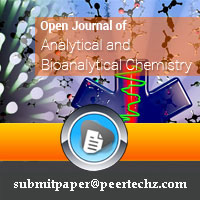
Article Alerts
Subscribe to our articles alerts and stay tuned.
 This work is licensed under a Creative Commons Attribution 4.0 International License.
This work is licensed under a Creative Commons Attribution 4.0 International License.
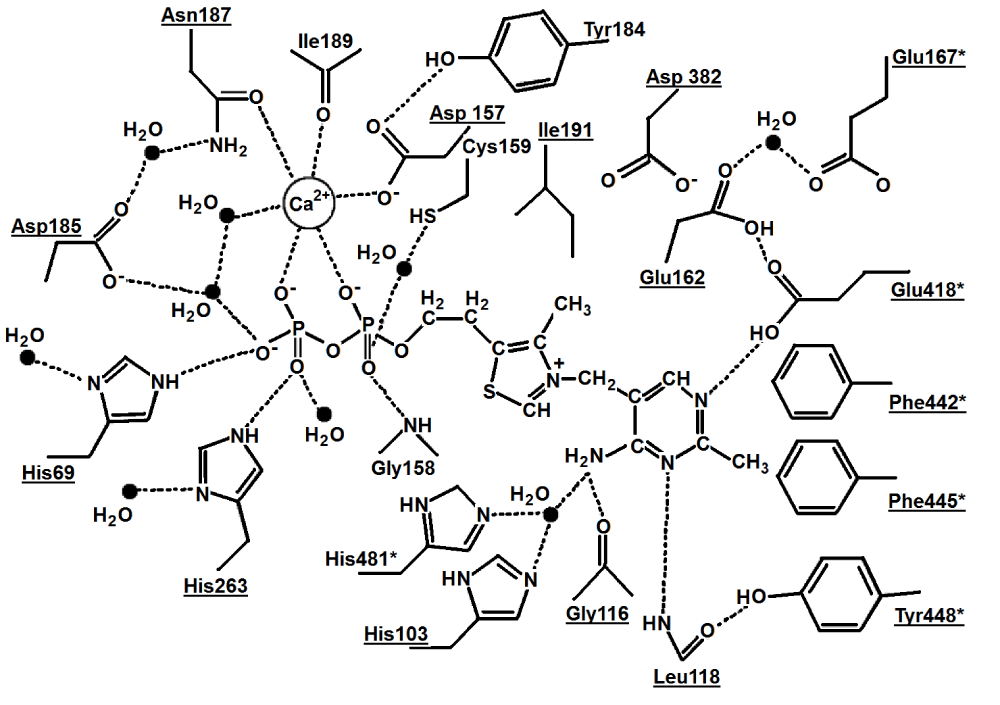
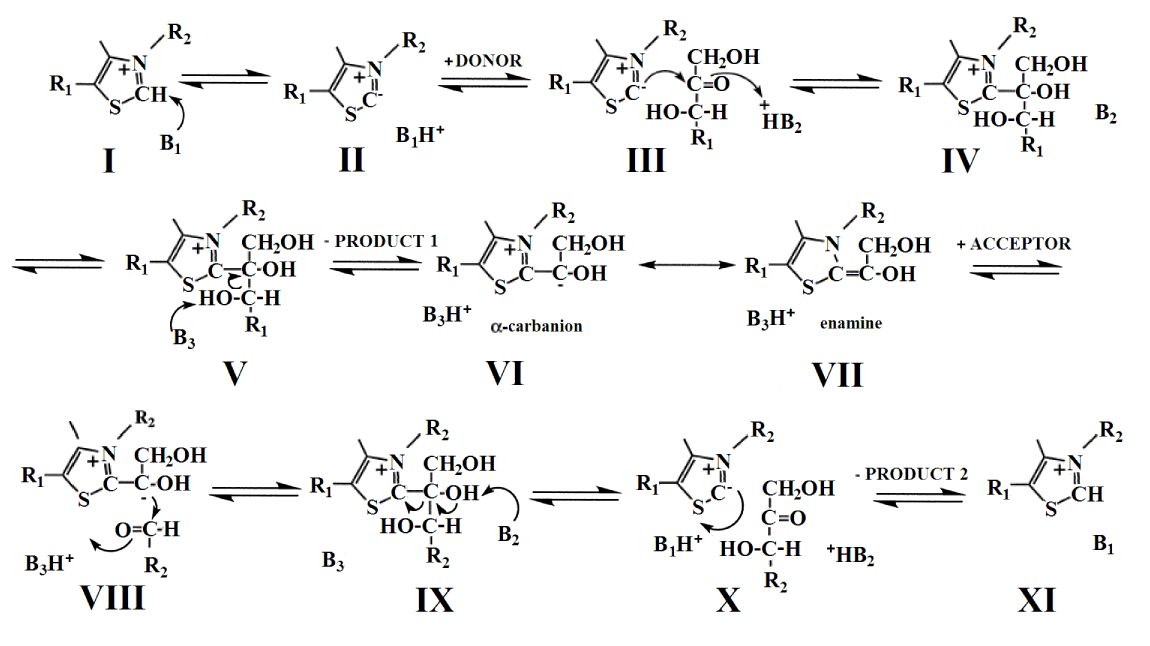
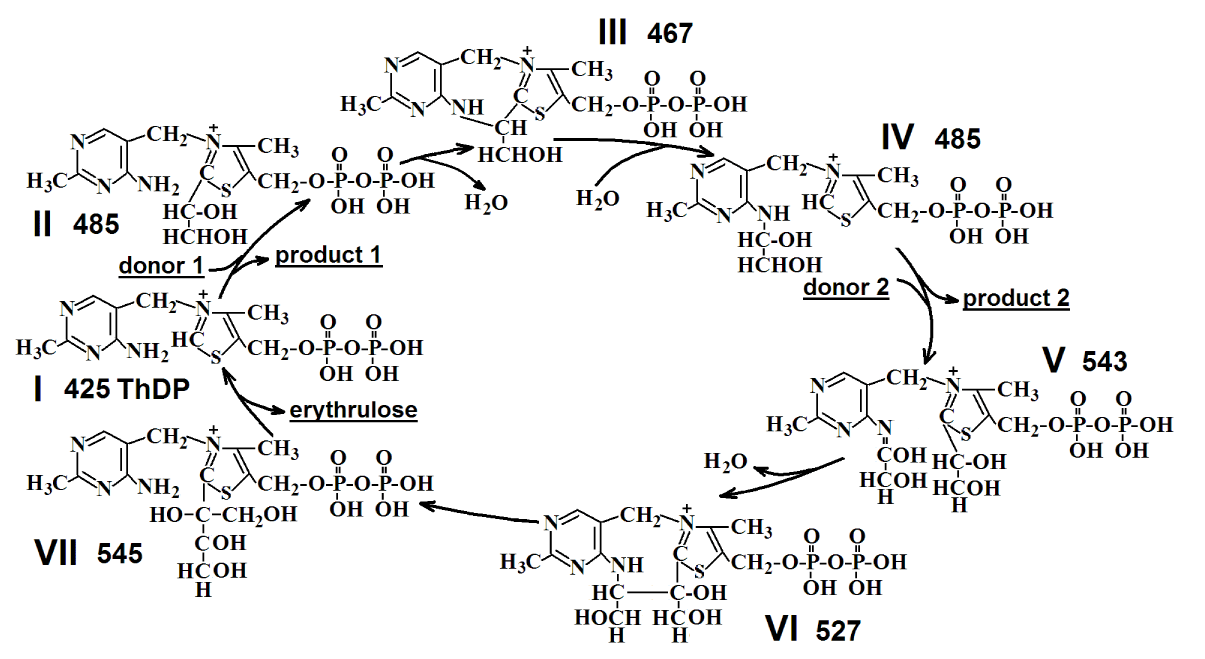
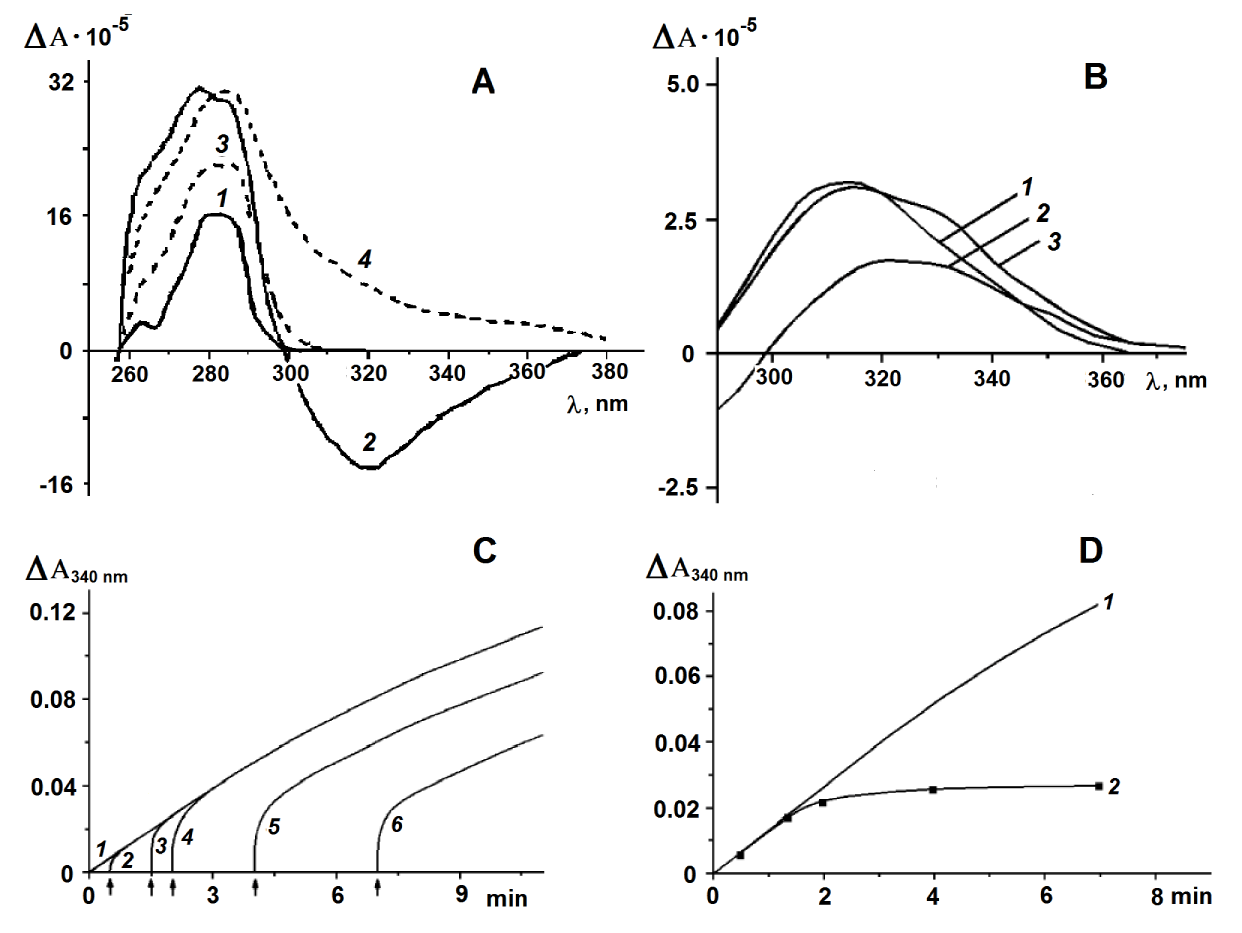
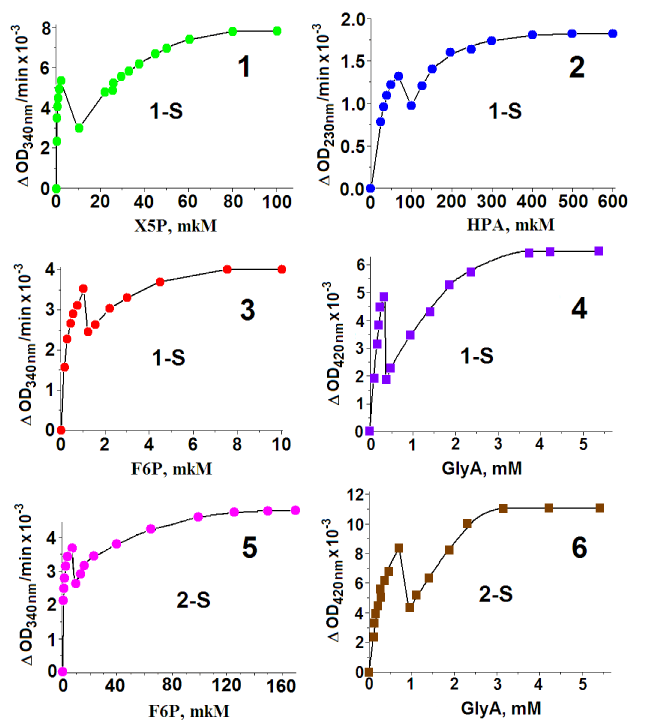
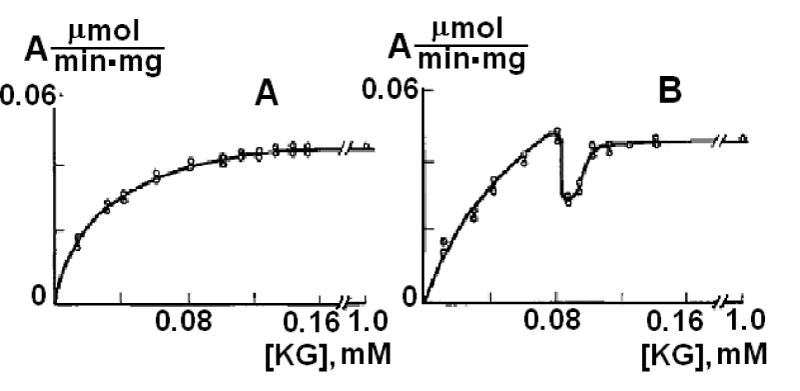
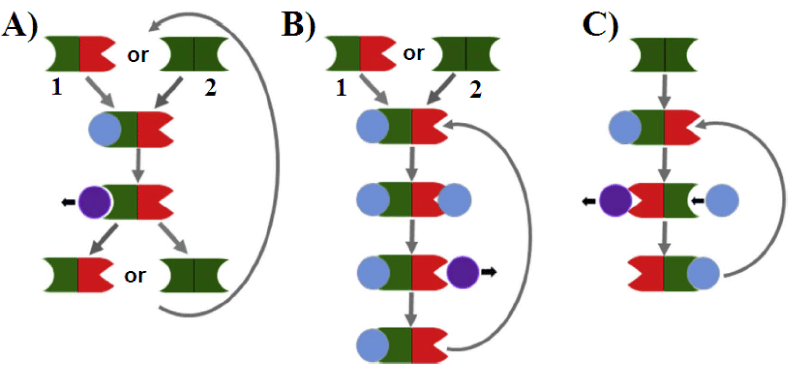
 Save to Mendeley
Save to Mendeley
